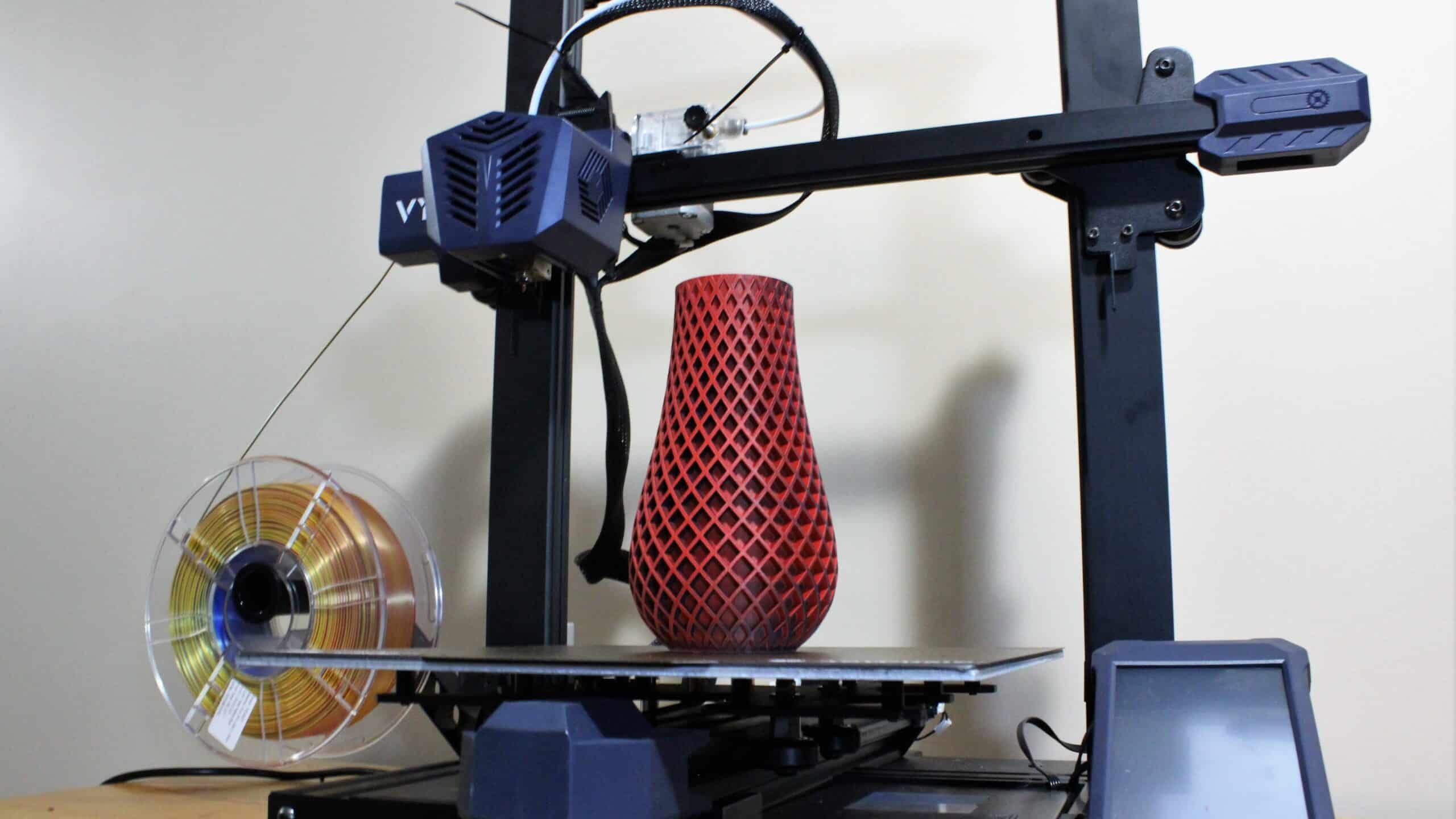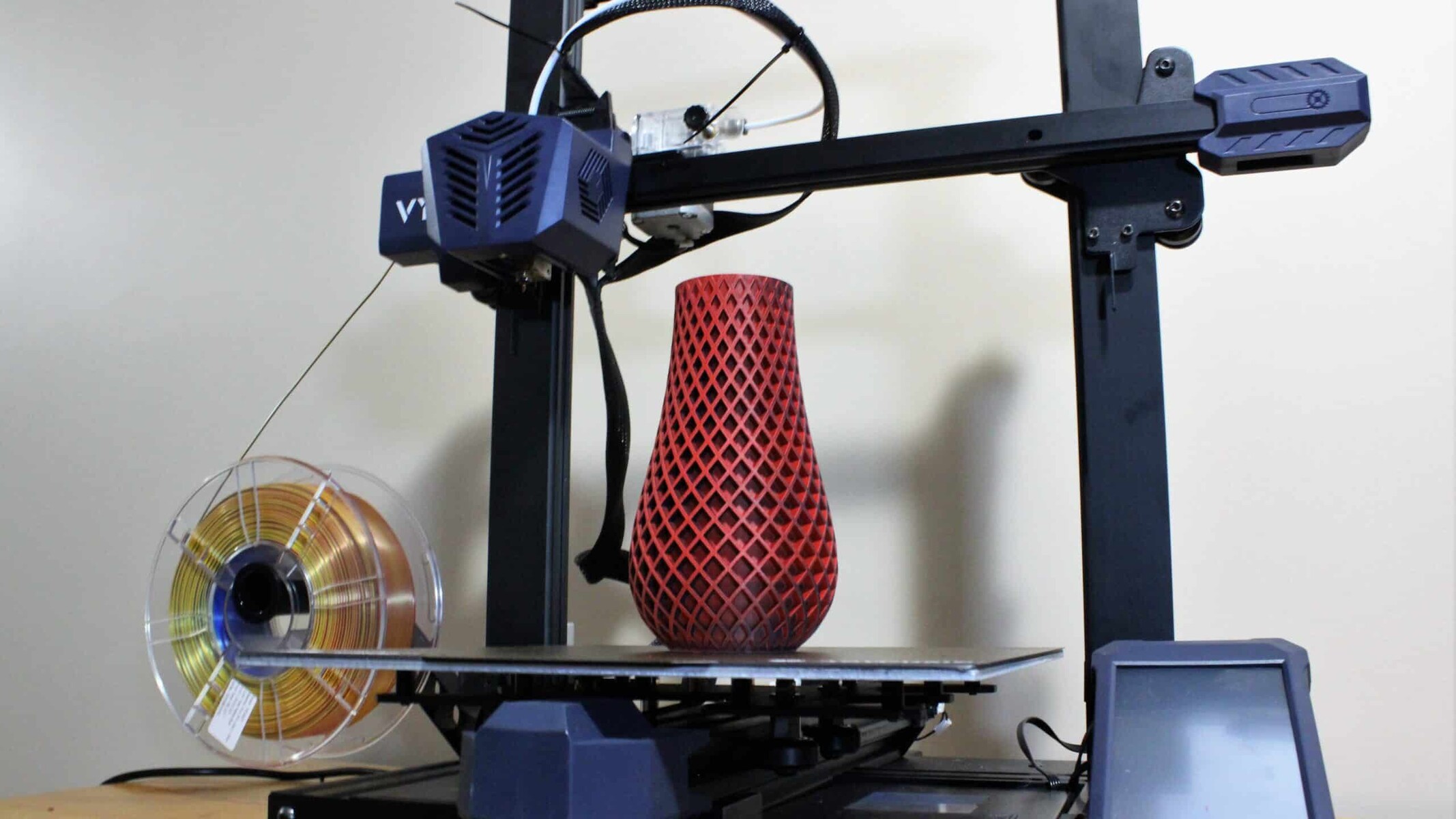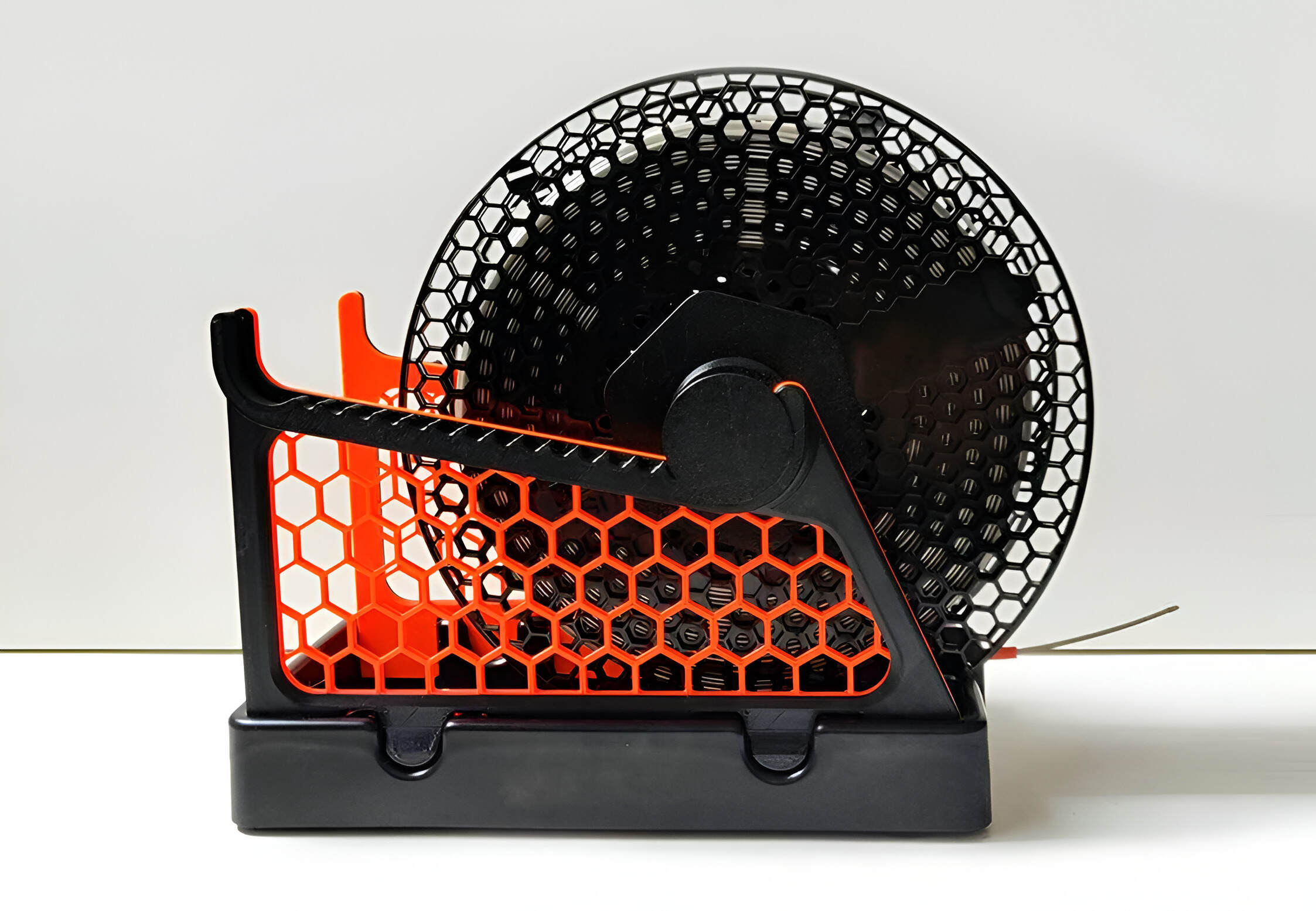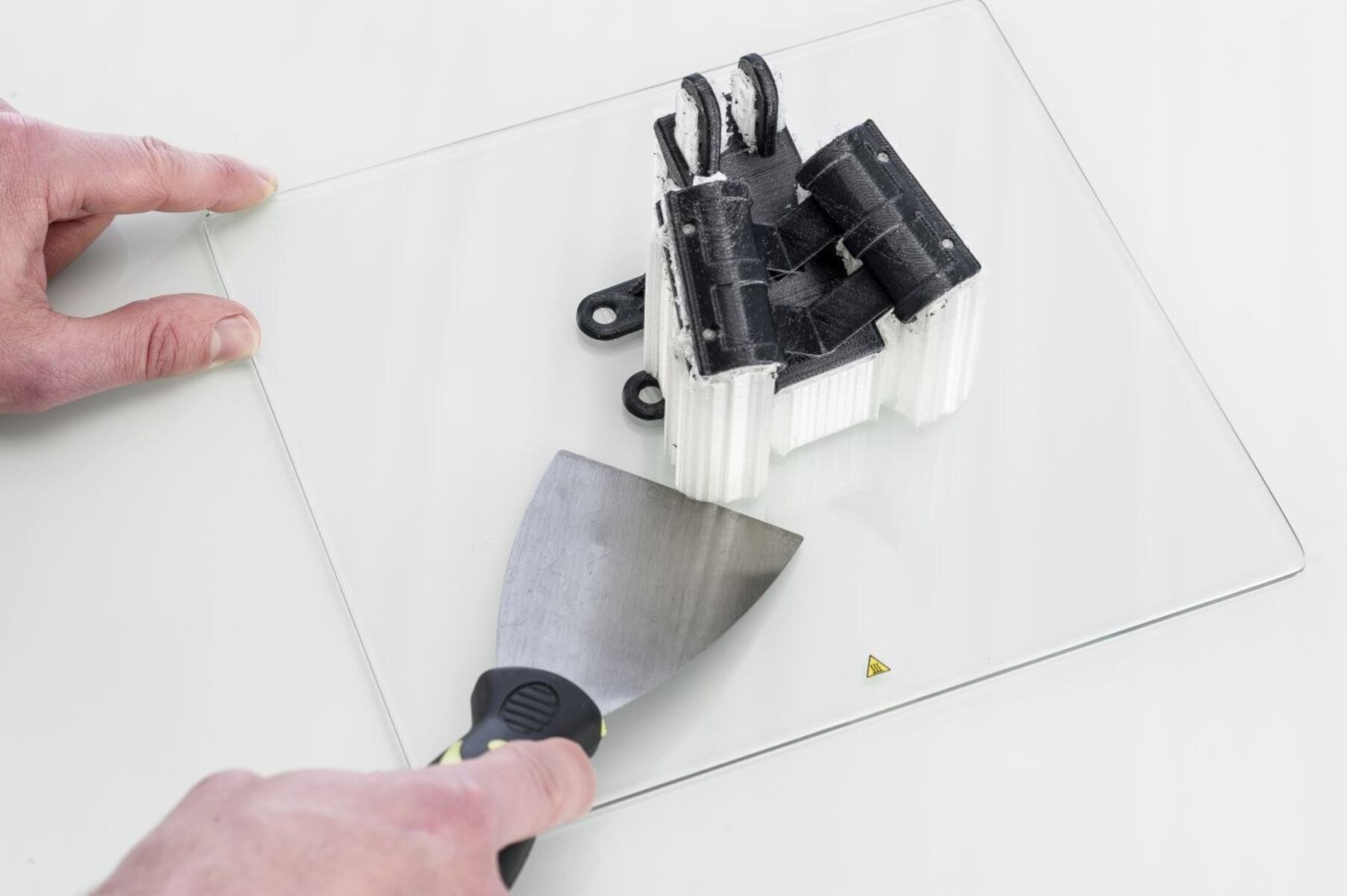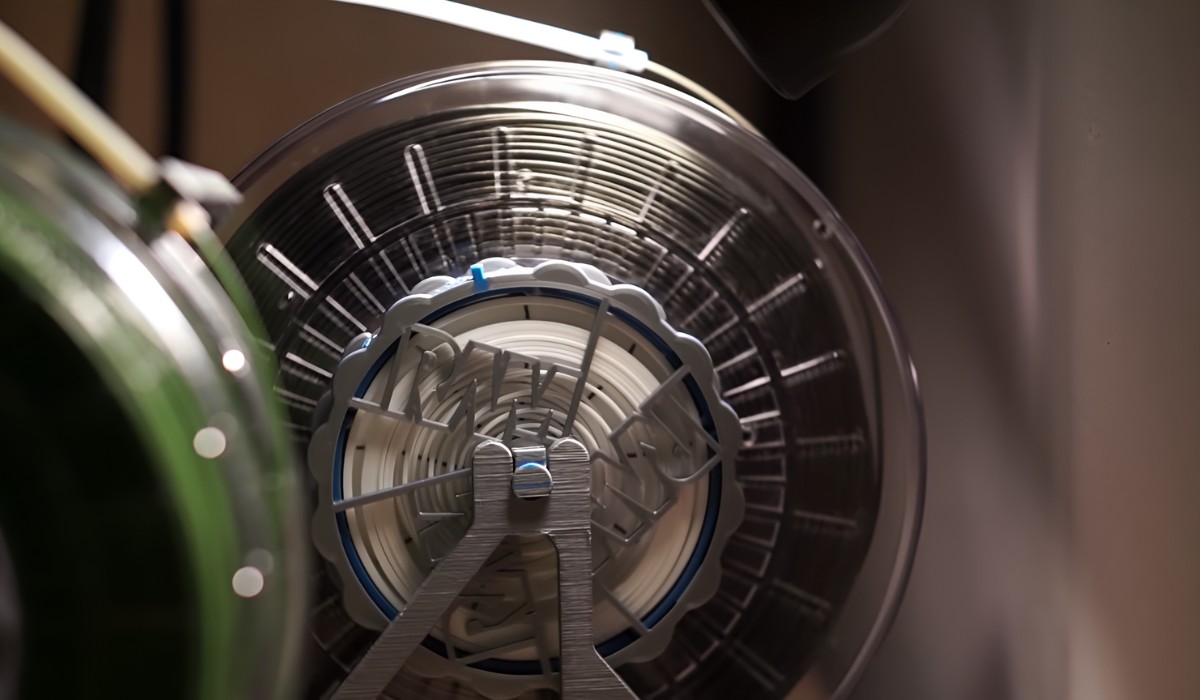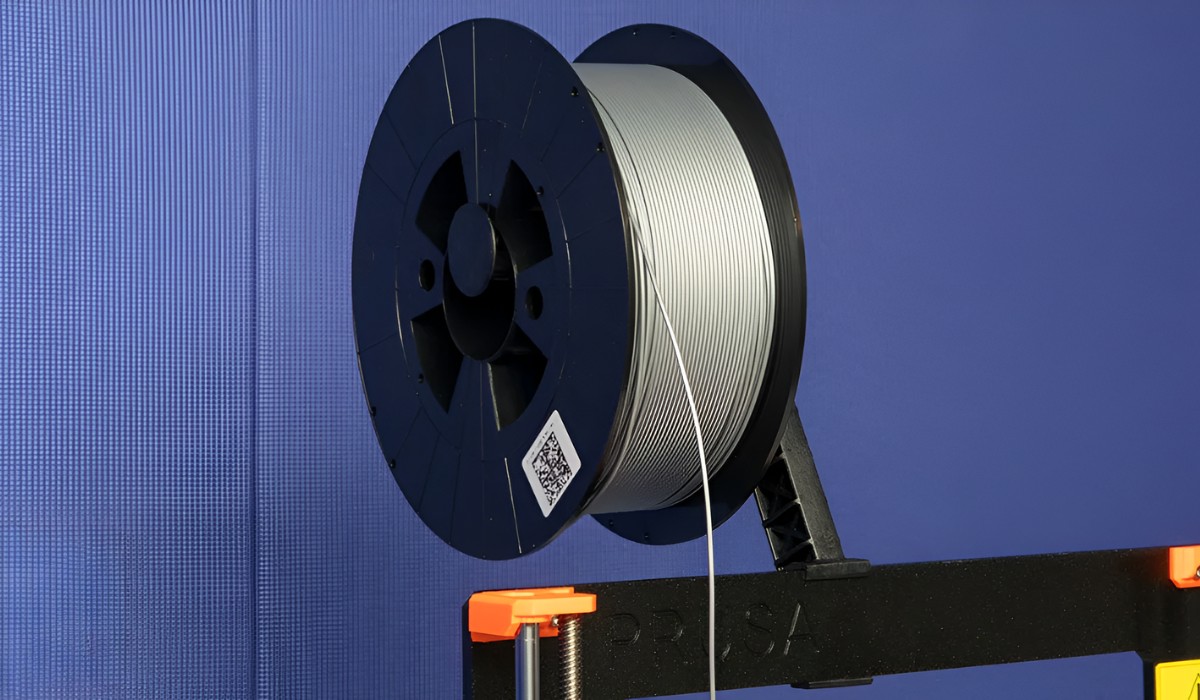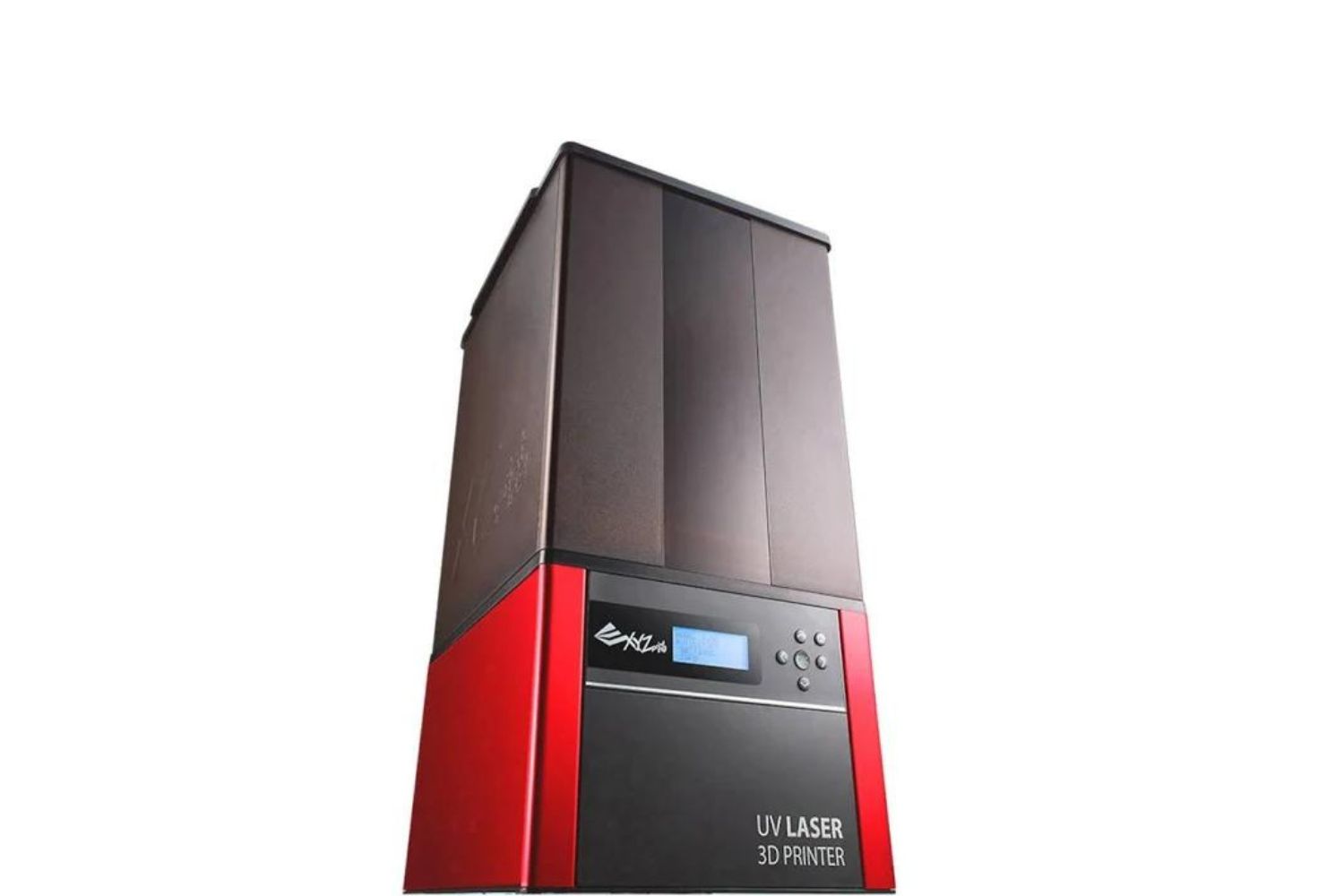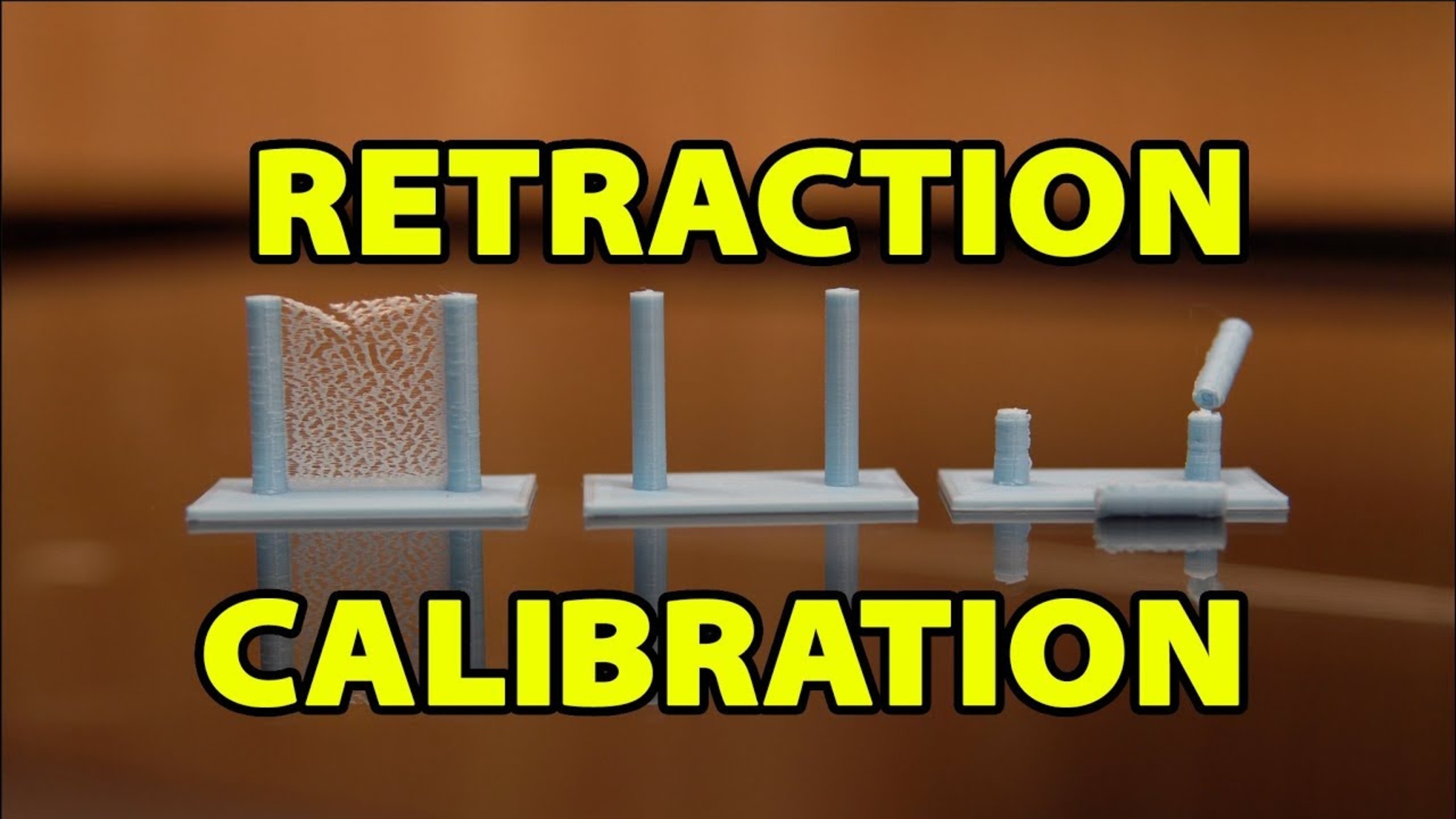Introduction
Welcome to the fascinating world of 3D printing! From creating intricate prototypes to artistic sculptures, 3D printing has revolutionized many industries. But have you ever wondered how much filament a 3D printer uses?
Filament, in simple terms, is the raw material used by 3D printers to create objects layer by layer. It is typically made of plastic, such as PLA (Polylactic Acid) or ABS (Acrylonitrile Butadiene Styrene), and comes in various colors and thicknesses.
Understanding the amount of filament your 3D printer consumes is crucial for budgeting and planning your projects. Whether you are a hobbyist or a professional, optimizing filament usage can save you money and resources in the long run.
This article aims to shed light on how 3D printers use filament and the factors that influence filament consumption rates. We will also explore typical filament usage for common 3D printing projects and provide some useful tips for reducing filament usage without compromising the quality of your prints.
So, if you are curious about the intricacies of filament usage in 3D printing, read on to discover everything you need to know!
What is filament?
Filament is the essential material used in 3D printing. It is a thermoplastic thread-like substance that is fed into a 3D printer and melted to create the desired object.
The most common types of filaments used in 3D printing are PLA (Polylactic Acid) and ABS (Acrylonitrile Butadiene Styrene). PLA is biodegradable and derived from renewable resources like corn starch or sugarcane, making it environmentally friendly. ABS, on the other hand, is a petroleum-based plastic known for its strength and durability.
Filaments are available in various colors and diameters, typically ranging from 1.75mm to 3mm. The diameter of the filament will depend on the specifications of your 3D printer’s nozzle. It is essential to ensure that the filament you choose is compatible with your printer to ensure smooth printing and optimal results.
In addition to PLA and ABS, there are other types of filaments available on the market, such as PETG (Polyethylene Terephthalate Glycol), TPU (Thermoplastic Polyurethane), and nylon, each with its own unique properties and applications.
When selecting the type of filament for your 3D printing projects, consider factors like flexibility, strength, temperature resistance, and environmental impact. Understanding the characteristics of different filaments will help you choose the best one to meet your specific project requirements.
It is worth noting that filaments can vary in quality and consistency. Higher-quality filaments tend to be more reliable and produce better prints. Some brands also offer specialized filaments with unique properties, such as wood-infused filaments for a natural look or conductive filaments for creating circuits.
Now that we have explained what filament is and its various types, let’s dive deeper into how a 3D printer uses filament to create objects in the next section.
How does a 3D printer use filament?
A 3D printer uses filament as the raw material to create objects layer by layer. The process starts with loading the filament onto a spool, which is then fed into the printer’s extruder. The extruder consists of a motor-driven gear system that pushes the filament through a heated nozzle.
Once the filament enters the nozzle, it is heated to its melting point. The melted filament is then extruded onto a build plate, where it quickly cools down and solidifies, forming a solid layer. The build plate is gradually lowered or moved, and the process is repeated layer by layer until the object is complete.
To ensure precise and accurate printing, 3D printers rely on sophisticated software that slices the digital 3D model into a series of cross-sectional layers. These layers are then translated into instructions that guide the printer’s movements, extrusion rate, and temperature control.
Different types of 3D printers utilize various extrusion mechanisms. Fused Deposition Modeling (FDM) printers, which are the most common type, use a filament-based extrusion system. Typically, the extruder moves in both the X and Y axes, while the build plate moves in the Z-axis to create the vertical layers.
Other types of 3D printers, such as SLA (Stereolithography) or DLP (Digital Light Processing) printers, use liquid resin instead of filament. These printers employ a different process where the resin is selectively cured by UV light to solidify each layer.
During the printing process, the 3D printer controls the flow rate and speed at which the filament is extruded. This control ensures that the right amount of filament is used to create each layer, resulting in accurate and consistent prints. The printer’s settings, such as layer height and infill density, also affect how much filament is consumed.
Now that we have covered how a 3D printer uses filament, let’s explore the factors that influence how much filament a 3D printer uses in the next section.
Factors that affect how much filament a 3D printer uses
The amount of filament used by a 3D printer can vary depending on several factors. Understanding these factors can help you estimate and optimize filament usage for your 3D printing projects. Here are the key factors that affect filament consumption:
1. Object size and complexity: Larger and more intricate objects require more filament to print. Objects with intricate details or high-resolution settings may use more filament due to the increased number of layers or finer print resolution.
2. Layer height: The layer height determines the thickness of each printed layer. Smaller layer heights result in smoother prints but also require more layers, thus increasing filament usage. Higher layer heights can reduce filament consumption, but may compromise print quality.
3. Infill density: Infill refers to the internal structure of the printed object. Higher infill density, such as 50% or 75%, will consume more filament as it fills more of the object’s interior. Lower infill densities like 20% or 10% can help reduce filament usage but may affect the object’s structural strength.
4. Print speed: The speed at which the printer moves during the printing process can impact filament usage. Higher print speeds may require more filament as the printer needs to extrude material quickly to keep up with the movement. Slower print speeds can reduce filament usage but may result in longer printing times.
5. Support structures: Some prints require support structures to prevent overhangs or to stabilize complex geometries. These support structures are typically generated automatically by the slicing software. The amount of support material used will add to filament consumption.
6. Nozzle diameter: The size of the printer’s nozzle affects filament usage. Smaller nozzle diameters extrude thinner lines of filament, which can result in more layers and increased filament consumption. Larger nozzle diameters can reduce printing time and filament usage but may affect print quality.
7. Print settings: Factors like print temperature, cooling settings, and retraction settings can also impact filament usage. Experimenting with these settings can help find the right balance between quality and efficiency.
By considering these factors and adjusting the settings accordingly, you can optimize filament usage and strike a balance between quality and efficiency in your 3D printing projects.
Understanding filament consumption rates
Measuring filament consumption is essential for estimating costs and planning your 3D printing projects. Several factors contribute to the overall filament consumption rate of a 3D printer. By understanding these factors, you can better predict how much filament will be used for a given project.
1. Filament diameter: The diameter of the filament affects how much material is extruded by the printer. Thicker filaments, such as 3mm, will consume more material compared to thinner filaments like 1.75mm at the same print settings.
2. Printing speed: The speed at which the printer operates influences filament consumption. Higher print speeds result in faster extrusion, using more filament per unit of time. Slower print speeds can help reduce filament usage but may increase overall print time.
3. Infill density: The density of the internal structure of the printed object significantly impacts filament consumption. Higher infill densities, such as 50% or more, will use more filament compared to lower densities like 20% or 10%.
4. Layer height: The layer height determines the thickness of each printed layer. Smaller layer heights require more layers to complete the object, resulting in increased filament usage. Higher layer heights can reduce filament consumption but may affect print quality.
5. Object size and complexity: Naturally, larger and more complex objects will require more filament to print. Objects with intricate details or high-resolution settings will use additional filament due to the increased number of layers or finer print resolution.
It is essential to note that different materials have varying densities and printing characteristics. Depending on the material you are using, the consumption rate can differ. For example, PLA filament generally has lower density than ABS, resulting in a slightly higher consumption rate for the same object.
It is also worth mentioning that some slicing software provides estimates for filament consumption based on the selected print settings. While these estimates can be helpful, they may not always be 100% accurate due to varying factors during the printing process, such as extrusion inconsistencies or filament wastage during filament changes.
By considering these factors and utilizing slicing software estimates as a reference, you can gain a better understanding of filament consumption rates and make more informed decisions while planning your 3D printing projects.
Typical filament usage for common 3D printing projects
The amount of filament used for a 3D printing project can vary depending on the specific requirements of the object being printed. However, we can provide some estimates of typical filament usage for common 3D printing projects to give you a general idea.
1. Small figurines and miniatures: Printing small figurines or miniatures typically requires a relatively small amount of filament. Depending on the complexity and size of the model, you can expect to use anywhere from 5 to 15 grams of filament for each print.
2. Functional prototypes: Functional prototypes often require more filament due to their larger size and intricacy. Small to medium-sized functional prototypes can consume around 50 to 100 grams of filament, depending on the complexity of the design and the desired infill density.
3. Household items and accessories: Printing household items like phone stands, cable organizers, or kitchen utensils can vary in filament usage. On average, you can expect to use approximately 20 to 50 grams of filament for small to medium-sized objects.
4. Cosplay props and costume accessories: Creating larger cosplay props and costume accessories can require a significant amount of filament. Depending on the size and intricacy of the prop, filament usage can range anywhere from 100 grams to several kilograms.
5. Vases and decorative objects: Printing intricate vases and decorative objects may require a moderate amount of filament. Depending on the size and level of detail, filament usage can vary from 50 to 200 grams or more.
These are just rough estimates, and the actual filament usage will depend on various factors such as the size, infill density, layer height, and complexity of the object being printed. It is always advisable to have a small margin of extra filament to account for any unexpected errors or printing failures.
Keep in mind that experimenting with different print settings and utilizing advanced options like variable infill density or adaptive layer heights can help optimize filament usage for specific projects.
Now that you have an idea of typical filament usage for common 3D printing projects, let’s move on to some useful tips for reducing filament usage!
Tips for reducing filament usage
Reducing filament usage not only saves you money but also helps minimize waste and environmental impact. Here are some tips and techniques to reduce filament usage without compromising the quality of your 3D prints:
1. Adjust infill density: Lowering the infill density can significantly reduce filament consumption. Consider using a lower infill percentage, such as 20% or 15%, for objects that don’t require high structural integrity. This can help cut down on the amount of filament used in the internal structure of the object.
2. Optimize layer height: Experiment with different layer heights to find the optimal balance between print quality and filament usage. Increasing the layer height can reduce the number of layers required and, therefore, lower filament consumption.
3. Use fewer perimeters: Adjusting the number of perimeters (also known as shells) can impact filament usage. Decreasing the number of perimeters, while maintaining an adequate wall thickness, can help save filament without compromising the strength and quality of the print.
4. Reduce support structures: Consider optimizing support structures for objects that require them. Adjust the support settings in your slicing software to generate only the necessary supports, minimizing the amount of filament used for support structures.
5. Enable adaptive layer heights: Advanced slicing software offers features like adaptive layer heights, which adjust the layer height based on the level of detail required. This can help reduce filament consumption by using thicker layers for less detailed areas of the print.
6. Utilize infill patterns: Experiment with different infill patterns, such as rectilinear, honeycomb, or gyroid, to optimize filament usage. Some patterns offer better strength-to-filament ratio, allowing for increased infill density without excessive filament usage.
7. Recycle and re-use excess filament: Consider recycling and reusing excess filament whenever possible. There are filament recycling machines available that allow you to melt and reuse old or failed prints, reducing the need for additional filament purchases.
8. Take advantage of draft settings: For prototypes or objects where aesthetics are not a priority, utilizing draft settings can help speed up the printing process and reduce filament usage. Draft settings typically use larger layer heights and fewer perimeters to produce faster, more economical prints.
By implementing these tips and techniques, you can optimize filament usage, minimize waste, and save on costs while still achieving high-quality 3D prints.
Now that we’ve explored ways to reduce filament usage, let’s wrap up our discussion on filament consumption in 3D printing!
Conclusion
Understanding how much filament a 3D printer uses is crucial for budgeting, planning, and optimizing your 3D printing projects. By considering factors such as object size, complexity, layer height, and infill density, you can estimate the amount of filament required for a specific print.
Throughout this article, we’ve explored the fundamentals of filament, how a 3D printer uses filament, factors that affect filament consumption rates, typical filament usage for common projects, and tips for reducing filament usage.
By adjusting settings such as infill density, layer height, and print speed, you can optimize filament usage without compromising the quality of your prints. Furthermore, exploring features like adaptive layer heights and different infill patterns can further contribute to efficient filament utilization.
Remember to consider the specific requirements of your 3D printing projects and adjust settings accordingly to find the right balance between filament usage, print quality, and efficiency.
By applying these insights and adopting sustainable practices like recycling and reusing filament, you can not only save costs but also reduce waste and minimize the environmental impact of your 3D printing endeavors.
So, whether you’re a hobbyist or a professional, optimizing filament usage is an essential skill in the world of 3D printing. Achieving the desired results while using filament responsibly ensures a more economical and eco-friendly approach to this fascinating technology.







